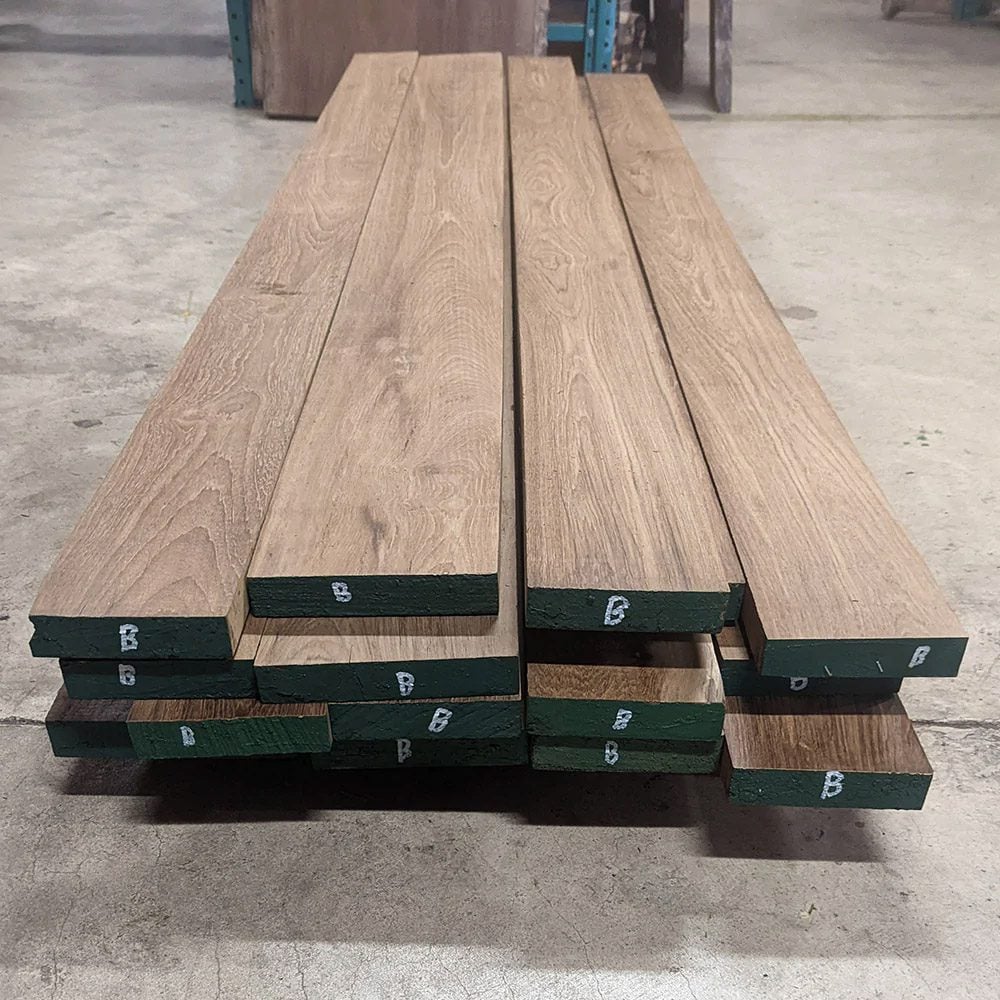When stepping into a lumberyard or browsing wood for a project, you might come across terms like 4/4, 5/4, 6/4, and 8/4 lumber. We often get people that are confused on these measurements or criticize us for not knowing proper fractional measurements. These numbers, which may seem cryptic or wrong at first, are essential in understanding how lumber is sized and sold.
Let’s break down what these measurements mean, how they are used, and delve into the history of how lumber came to be measured this way.
What Does 4/4 Lumber Mean?
The term “4/4” (pronounced “four-quarter”) refers to the thickness of the lumber and is a traditional measurement used in the lumber industry. One “quarter” equals one-quarter of an inch in thickness. Therefore, 4/4 lumber means the wood is 1 inch thick. Similarly, 5/4 (five-quarter) lumber is 1.25 inches thick, 6/4 is 1.5 inches thick, and 8/4 is 2 inches thick.
Why Are These Measurements Used?
The quarter system is a standardized way to express the thickness of rough (not yet planed) lumber. This measurement is crucial because it allows for a reduction in thickness during the milling process. Rough-sawn lumber is usually thicker and is planed down to make it smooth and uniform, which reduces its final thickness. For instance, rough 4/4 lumber might actually be about 1 inch thick, but after planing, it could be closer to 3/4 inch.
The History of Lumber Measurement
The quarter system dates back to at least the early 19th century, though its exact origins are somewhat unclear. It likely developed as a practical method for quickly categorizing and pricing lumber based on its size. The system provided an easy shorthand for the lumber industry to standardize the varying thicknesses of boards, essential for buyers and sellers in the market.
In early American history, wood was an abundant resource, and sawmills proliferated across the landscape to meet the demands of growing towns and industries. The quarter system may have emerged as a natural evolution in trading practices, a straightforward way for millers and carpenters to communicate about the thickness of wood without needing detailed descriptions.
Modern Usage and Variations
Today, the quarter system remains widely used in the United States and Canada, particularly in the hardwood industry. It’s a crucial part of the lumber trade and woodworking, where precise measurements can significantly impact the quality and usability of the final product.
However, it’s important to note that the thickness can vary slightly depending on the milling standards and the moisture content of the wood. Wood shrinks as it dries, so the actual dimensions may not always exactly match the nominal dimensions.
Buy Lumber Online
At AdvantageLumber.com you can buy a wide variety of domestic and exotic rough cut hardwood lumber direct online and have it shipped direct to your home.
Conclusion
Understanding the measurements of 4/4, 5/4, 6/4, and 8/4 lumber is vital for anyone involved in woodworking or construction. These measurements provide a universal language that helps maintain consistency across the industry. The quarter system is a testament to the practical and historical evolution of the lumber industry, an example of how a simple idea can standardize and simplify trade, making it easier for professionals and hobbyists alike to select the right wood for their projects.
Whether you are a seasoned woodworker or a DIY enthusiast, knowing these lumber sizes will help you navigate the selection process more effectively and ensure that you achieve the best results for your projects.
